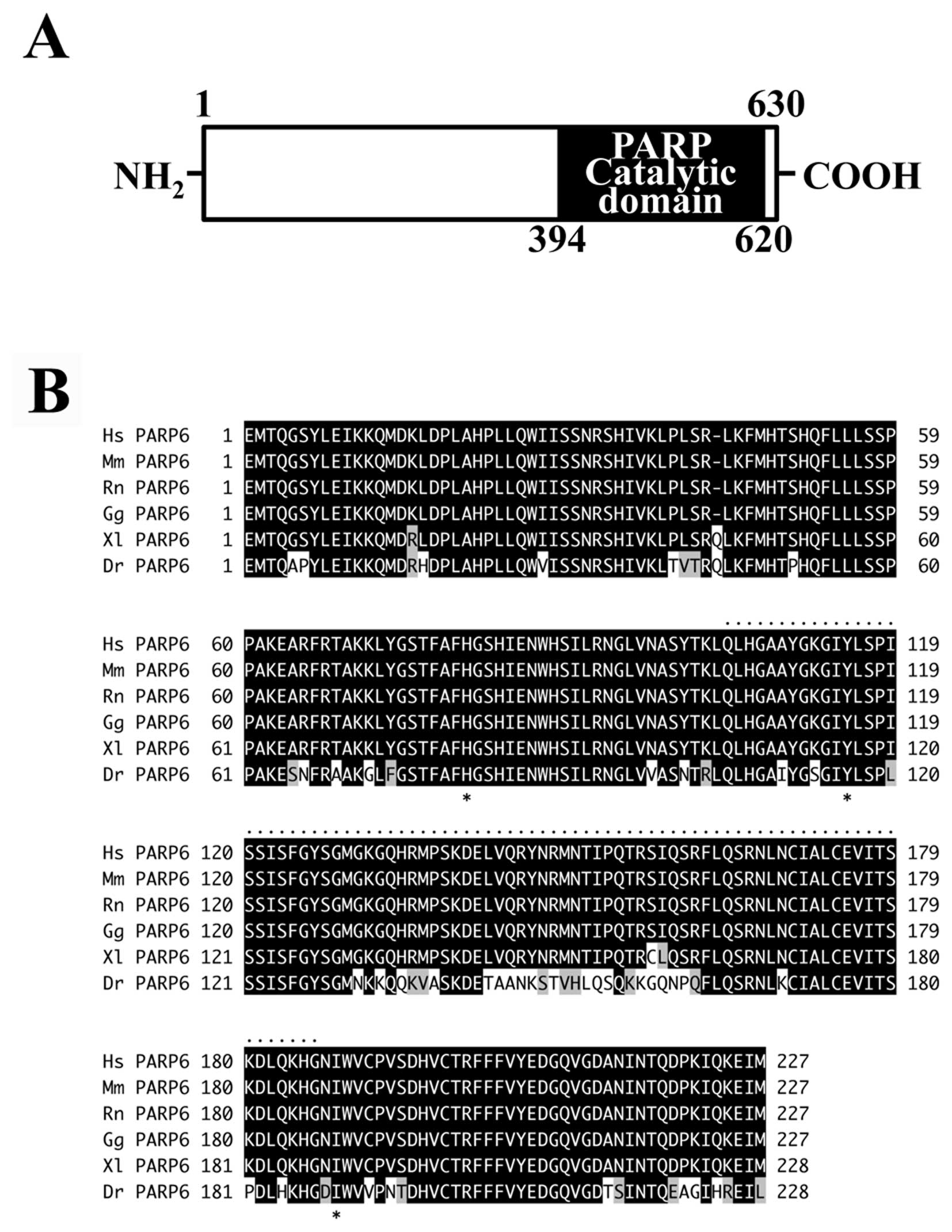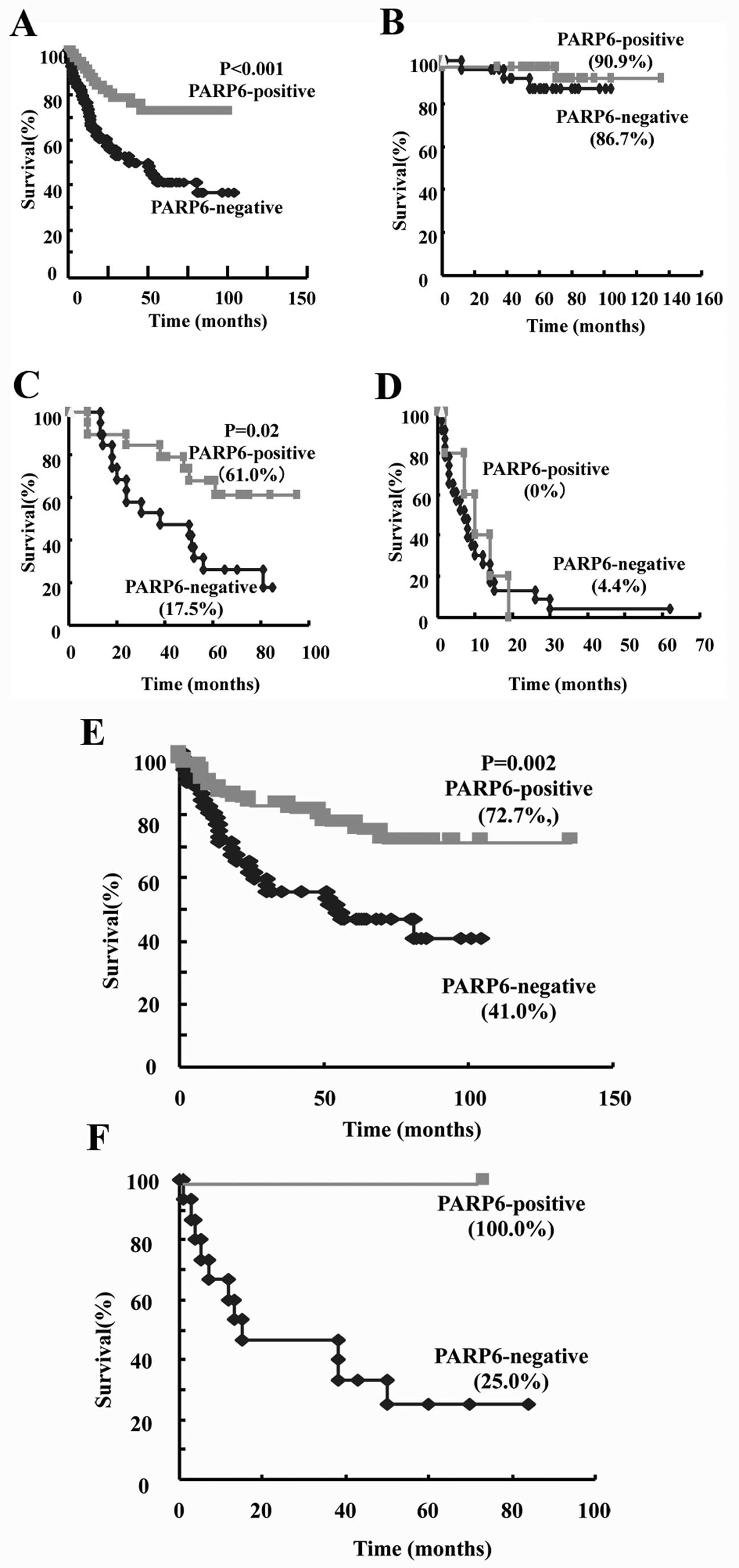PARP6, a mono(ADP-ribosyl) transferase and a negative regulator of cell proliferation, is involved in colorectal cancer development
- Authors:
- Published online on: October 4, 2012 https://doi.org/10.3892/ijo.2012.1652
- Pages: 2079-2086
Metrics: Total
Views: 0 (Spandidos Publications: | PMC Statistics: )
Total PDF Downloads: 0 (Spandidos Publications: | PMC Statistics: )
Abstract
Poly(ADP-ribose) polymerase (PARP) is an enzyme that mediates post-translational modification of proteins. Seventeen known members of the PARP superfamily can be grouped into three classes based on catalytic activity: (i) classical poly(ADP-ribose) polymerases, (ii) mono(ADP‑ribosyl) transferases and (iii) catalytically inactive members. PARP6 belongs to the mono(ADP-ribosyl) transferase class, and here we have found that PARP6 is a negative regulator of cell proliferation. Forced expression of PARP6 in HeLa cells induced growth suppression, but a PARP6 mutant with a C-terminal deletion lacking the catalytic domain had no effect. The PARP6-expressing cells accumulated in the S-phase, and the magnitude of S-phase accumulation was observed to be greater in cells expressing a PARP6 mutant with an N-terminal deletion, lacking a putative regulatory domain. Immunohistochemical analysis revealed that PARP6 positivity was found at higher frequencies in colorectal cancer tissues with well-differentiated histology compared to those with poorly differentiated histology. Furthermore, PARP6 positivity negatively correlated with the Ki-67 proliferation index. Kaplan-Meier analysis showed that PARP6-positive colorectal cancer had a good prognosis. Based on these results, we propose that PARP6 acts as a tumor suppressor through its role in cell cycle control.















